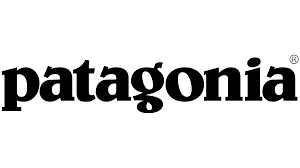Patagonia Uses Calabrio to Support the Scheduling Needs of Their Remote Agents
0% -> 100%
Portion of workforce shifted
from office to working from home
from office to working from home
200
Number of agents
transitioned to WFH
transitioned to WFH
∞
Infinite number of scheduling
options that could be tested
options that could be tested

At a Glance
Company Patagonia
Industry Retail
Location Global
Products Used Calabrio ONE
About Patagonia
Headquartered in Ventura, Calif. with retail stores across the U.S., Europe, Japan, Argentina and Chile, outdoor clothing company Patagonia has revenues of approximately $800 million and employs an estimated 2,300 people around the world. Patagonia differentiates itself from other retailers with a steadfast commitment to four core values: build the best product, cause no unnecessary harm, use business to protect nature and do not be bound by convention.
Creative scheduling supports agents’ changing WFH needs while giving managers structure and predictability.
Challenge
Few Patagonia employees worked remotely pre-COVID. But, in early March 2020, leaders tracking the pandemic’s fast growth and rising severity quickly mobilised their teams and shifted all employees to a 100% remote work model to protect their health and ensure their safety.
Patagonia’s IT and operations team seamlessly completed the logistical transition within only 72 hours—without a single of day of operations lost. However, the new work model presented a host of dilemmas for Patagonia’s Customer Experience team. With many agents now also tending to distance learning and childcare duties during their normal working hours, contact centre leaders’ biggest challenge became scheduling. In particular, how could leaders pilot and test new shift options that supported an agent’s new work life while retaining the scheduling structure and predictability they themselves required?

Solution
To alleviate agent burnout while addressing the unpredictable, fragmented schedules of agents now working from home, Patagonia leaders knew they needed to take a new, more creative approach to agent scheduling. But they needed to do it in a way that wouldn’t interfere with the contact centre’s daily operations—operations now handling a surging number of customer service calls, emails and chats due to temporary Patagonia store and warehouse closings during periods of lockdown.
Leaders decided to set up a controlled test environment within Calabrio Workforce Management where they could simultaneously compare the impact of different forecasts using “what-if” models. After identifying two future calendar years identical to 2020, they architected three forecasts to test: creative scheduling options for 2020 that would give employees more flexibility, so they could spend more time with family as needed; a slight reduction in total number of hours worked each week for calendar year 2026; and a shift to a three- or four-day workweek for calendar year 2037.
“Testing the impact of new or different scheduling options on our business before actually implementing them was key to maximising our creative scheduling options, maintaining smooth contact centre operations despite any surges and minimising agent confusion during a time of great upheaval.
Trent Hays –
Customer Experience Scheduling Supervisor Patagonia
Result
Based upon the results from the varied test environments, contact centre leaders rolled out several immediate scheduling changes. They temporarily shifted to a four-day workweek early in the pandemic when the number of customer service interactions initially dipped. Then, as the number of inbound inquiries rose due to the closing of Patagonia’s retail stores, leaders ramped back up to a five-day workweek and gave employees the opportunity to request more flexibility within their schedules—by having entire mornings or afternoons off, for example. Leaders also shifted those agents who had young children at home to handle primarily chat or email inquiries, so they could easily step away from work whenever needed.
Leaders found they could more easily and effectively accommodate one-time scheduling changes by building them out in their 2026 and 2037 models first. Then, when they wanted to implement a one-time scheduling change, all they had to do was copy and paste the tested schedule activity back into the 2020 model where it was put into production in present time.
More stories from Calabrio Customers

Shopify
Learn how Shopify diversified its customer service by evolving from manual spreadsheets to modern, automated scheduling

Rentalcars.com
Rentalcars.com uses Calabrio Teleopti WFM technology to support a diverse contact centre workforce of 80 nationalities and 40 languages
![]()
Thomson Reuters
Thomson Reuters is a leading provider of business information services. Read how they managed to reduce average call time by nearly 2 minutes
